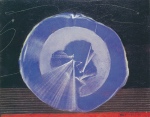Abstract
The academicization of the skaldic art in the twelfth century led to the production of model verses illustrating various meters and variations in the highly formalized poetic imagery, and, later, to skaldic treatises laying out the rules of the art form. In the following it will be argued that it also led to the formation of a clearly demarcated school canon of exemplary skalds. Skáldskaparmál is the text that gives us the clearest picture of the school canon of skalds that emerged in the early thirteenth century. By counting the number of times individual skalds were cited as well as the number of their lines that were cited, this article identifies the höfuðskáld (chief poets) of the school canon.Except where otherwise noted, the content of this site is licensed under a Creative Commons Attribution-ShareAlike 4.0 International (CC BY-SA 4.0).
Authors retain copyright of their work. The CC BY-SA 4.0 licence allows readers to copy and redistribute the material in any medium or format, and to remix, transform, and build upon the material for any purpose, even commercially, as long as the original author is credited and as long as any works that are derived from the original are distributed under the same terms.

